
20 Years of Military Flight Simulations, 1980-2000
20 Years of Military Flight Simulations on the PC, 1980-2000
By Len "Viking1" Hjalmarson.
Part 1: The beginnings
1971: Intel's first microprocessor
The year was 1971. Intel released its first microprocessor, the 4004, which powered the Busicom calculator. The 8008 was released the next year.
In 1974 the 8080 was released. The 8080 became the brains of one of the first personal computers -- the Altair, allegedly named for a destination of the Starship Enterprise from the Star Trek television show. Computer hobbyists ordered kits for the Altair for $395. Within months, it sold tens of thousands, creating the first PC back orders in history.
In 1975 Steven Jobs and Stephen Wozniak built computers in Jobs’ parents garage. In 1976 they sold 600 units of the first Apple computers for $666.66.

In 1976 the Beatles held their first West Coast fan convention in Seattle, Washington. Just over 2000 people attended the two day show.
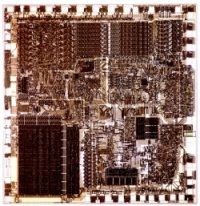
In 1978 the 8086 and 8088 were released and the IBM PC was born. The 8088's success propelled Intel into the ranks of the Fortune 500, and Fortune magazine named the company one of the "Business Triumphs of the Seventies."
In 1980 the Olympic Games were held in Moscow, and the U.S.A. did not participate. The 4th Annual Beatlefest Convention was held in Chicago, Illinois. Jimmy Carter was in the White House, and Margaret Thatcher had just come to power in Britain, with an unprecedented switch of the popular vote.
But so what? The real story is that the first flight simulations appeared in 1980, with FS1 for the TRS-80. The world was in travail with the personal computer, and computer gaming was born.
An unknown company: Microsoft
Fast forward to 1982. Ronald Reagan was in the White House, and Margaret Thatcher was firmly anchored in Downing Street. In 1982 the 286, also known as the 80286, was released. The 286 was the first Intel processor that could run all the software written for its predecessor. Within 6 years of its release, there were an estimated 15 million 286-based personal computers installed around the world.
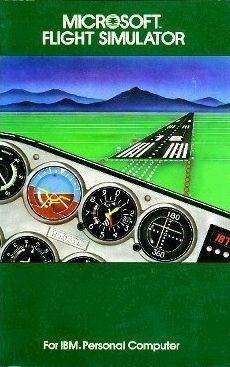
In 1982 an almost unknown company by the name of Microsoft released its first flight simulator for the IBM PC. Flight Simulator 1 wasn’t much to talk about, but the excitement it generated was substantial.
In 1983 a startup company by the name of Microprose released Hellcat Aces for the Atari.
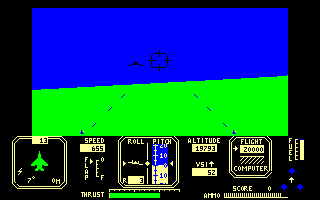
Digital Integration got their start in the same year with Fighter Pilot by Digital Integration.
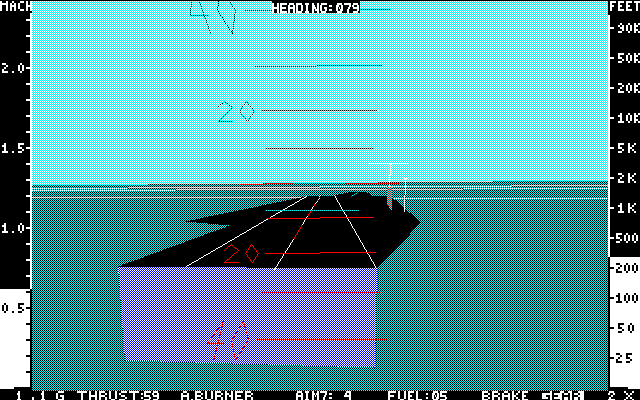
In 1983 Jet was released for the PC by Charles Guy, using technology developed by Bruce Artwick for Flight Simulator 1.
In January of 1984 the Macintosh was unveiled, and Jet was one of the early simulations released for both the PC and the Mac. Later in 1984 MicroProse released Spitfire Ace, a game developed by Sid Meier.
Steve Jobs is fired
In 1985 Steven Jobs was fired from his job as CEO of Apple Computers.
The Strike Eagle line was born in the same year when F-15 Strike Eagle I was released by Microprose in a port for the PC.
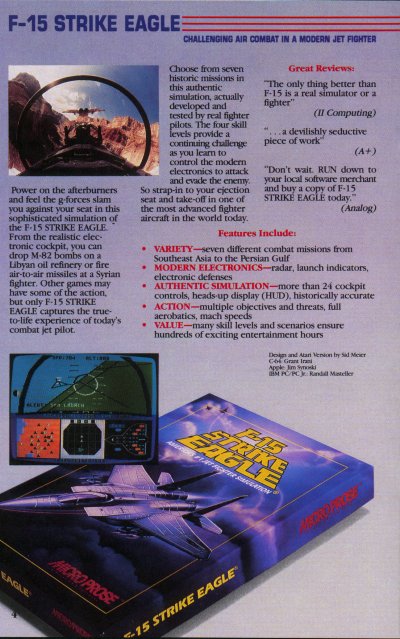
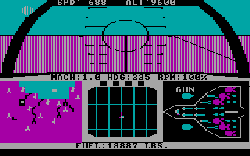
The code was a whopping 53K.
In spite of the slim code and 16 color graphics, the marketing machine was beginning to work overtime. Ads for Strike Eagle appeared in the major gaming journals, reading much like they do today.
Whew.
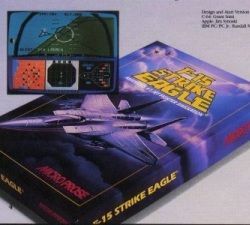
In 1986 A.C.E. (Air Combat Emulator) was published by Cascade Games, billed as "the Ultimate Jet Combat Simulator."
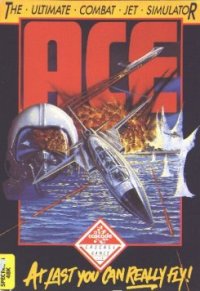
A.C.E. (Air Combat Emulator)
In reality the simulations up to this point were point and shoot type affairs. It was difficult to develop any sense of situational awareness, and sometimes even difficult to tell when you hit something. Damage models were almost non-existent, and avionics and weapon systems really weren’t simulated at all.
Physics and flight, however, were concerns, and the challenge was to create anything remotely recognizable as a flight model in a few kilobytes of code.
The average PC at this time ran at 12 MHz and had 64-128k of total memory.
Air Warrior is born
If there is a landmark year it was 1987. In 1987 AirWarrior was born, developed by Kelton Flinn, an early try at online gaming
Air Warrior made its debut on the Mac II with simple black and white graphics, no real physics model, and lacking ballistics and other things we now deem as crucial to any decent flight sim. It wasn’t long before Air Warrior appeared on the PC.
In 1987 Chuck Yeager's Advanced Flight Trainer appeared, attempting to teach the basics of flight on the PC, a needed preparation for the games that would follow.
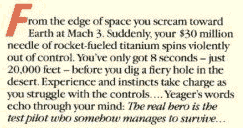
Chuck Yeager's Advanced Flight Trainer

Chuck Yeager's Advanced Flight Trainer
In the same year the first iteration of the Falcon series was released by Spectrum Holobyte and Gunship (1987) was released by Microprose.
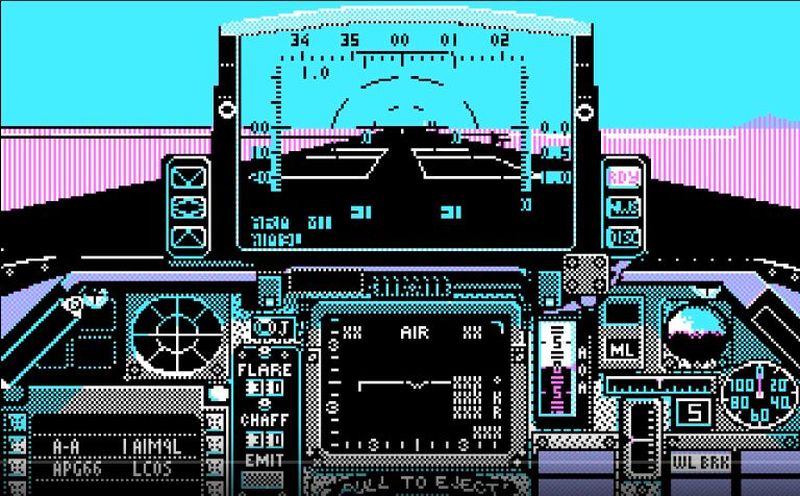
Falcon, 1987
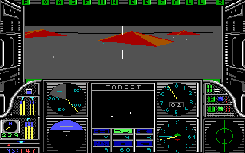
Gunship. 1987
Many simulation fans today count one or more of these last four titles as their "first love" in PC gaming, or at least their introduction to the hobby. Falcon, in 1987, preferred an IBM AT and required 256K to fly under DOS 2.x. 256k wasn’t cheap at the time and not everyone could afford the 12 or 16MHz AT.
It was still too early for the 640K machines or for 256 color VGA graphics, but the excitement was kindled.
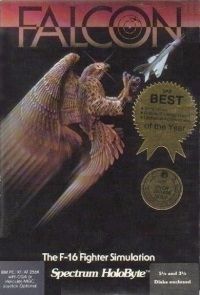
Box art to Falcon, 1987
In 1988 there were at least three significant releases for the PC, and among them were Falcon AT and Battlehawks 1942. Battlehawks marked LucasFilm GamesÔ entry into the genre, and Falcon AT was a landmark in its own right. A friend remarked,
With Falcon AT, established their name as a premiere simulation developer. The quote from a simulation fan establishes the intimate relationship between the growth of hardware and software. The gaming industry was rapidly establishing its own identity, and simulation fans were becoming identifiable as a group.
